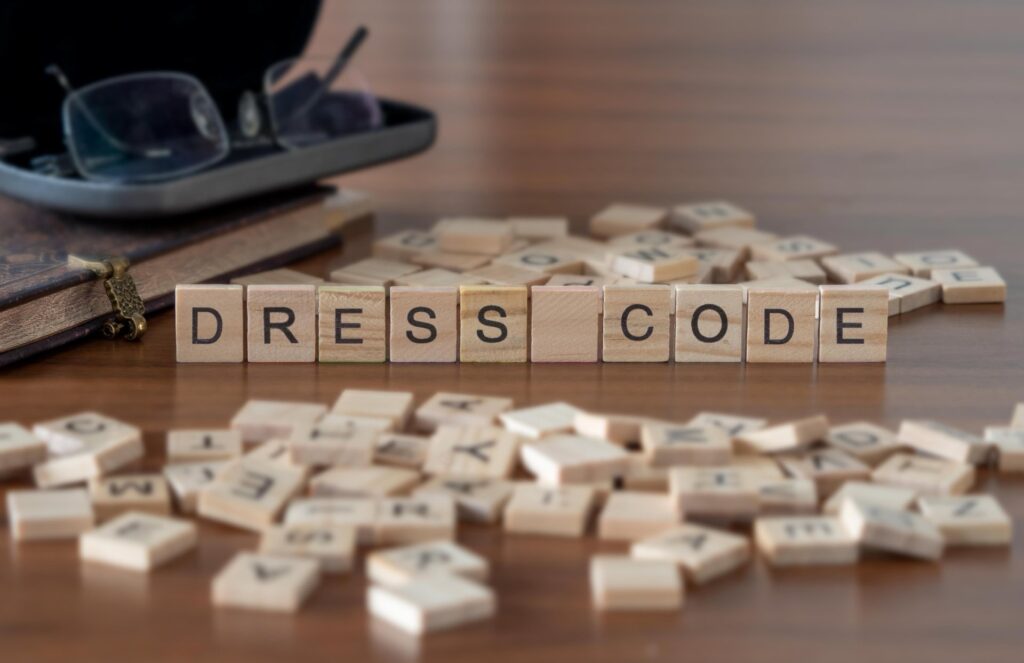Workplace dress codes are common, but they can sometimes cross the line into discrimination. While employers may set standards for professional appearance, those rules must not conflict with employees’ rights under state and federal law. In New York, when a dress code unfairly targets certain groups or ignores the need for accommodations, it may be unlawful.
Legal Framework
Both Title VII of the Civil Rights Act of 1964 and the New York State Human Rights Law prohibit workplace discrimination. These laws protect employees against policies that unfairly affect them because of religion, gender, disability, race, or other protected categories. A dress code that appears neutral on its face but disproportionately impacts a protected group can still be discriminatory. Employers must carefully design their policies to ensure fairness and compliance with the law.
Examples of Discriminatory Dress Codes
Dress codes become discriminatory when they restrict employees from expressing religious or cultural practices. For instance, prohibiting head coverings without allowing exceptions for hijabs, turbans, or yarmulkes can violate the law. Similarly, requiring gender-specific attire—such as insisting that only women wear skirts or only men wear ties—can reinforce outdated stereotypes and amount to gender bias.
Disability-based discrimination can also occur. If a policy requires shoes or clothing that someone with a medical condition cannot wear, the employer must make reasonable accommodations. Even grooming standards, like banning natural hairstyles commonly associated with Black employees, can be discriminatory. Each of these examples shows how a policy that seems neutral can actually single out certain groups unfairly.
How to Challenge an Unfair Policy
If you believe your employer’s dress code is discriminatory, there are steps you can take. Many workplaces encourage employees to raise concerns internally first, either with a supervisor or through human resources. If the issue is not resolved, employees in New York can file a complaint with the New York State Division of Human Rights or the Equal Employment Opportunity Commission (EEOC). In some cases, filing a lawsuit may be necessary to protect your rights and seek remedies. Having an experienced employment attorney can make this process easier and ensure your claim is presented effectively.
What Employers Are Allowed to Regulate
Employers are permitted to create dress codes, but the rules must be applied fairly and consistently. They may set standards for professionalism, require safety gear, or limit clothing with offensive logos or language. However, they must also provide reasonable accommodations for religious, cultural, or disability-related needs. The key is balance: employers can regulate appearance to a point, but they cannot enforce policies that discriminate or create unequal treatment.
FAQ
Can I be fired for refusing to follow a discriminatory dress code? If the dress code violates your rights under state or federal law, firing you for refusing to comply could be unlawful and form the basis of a legal claim.
What if the policy affects women more than men? Dress codes that impose stricter or more burdensome requirements on women can amount to gender discrimination under New York and federal law.
How can I prove the dress code is discriminatory? Documentation is important. Keep copies of the written policy, note when and how it was enforced, and record whether certain groups are treated differently. Speaking with an attorney can help you evaluate your evidence and next steps.
Protecting Your Rights at Work
A fair workplace requires fair policies, including dress codes. If you believe your employer’s policy unfairly targets you or others, you do not have to face it alone. At Gash & Associates, P.C., we advocate for employees in White Plains and throughout New York who are subject to discriminatory workplace practices. Call us at (914) 328-8800 to discuss your situation and learn how we can help protect your rights.

